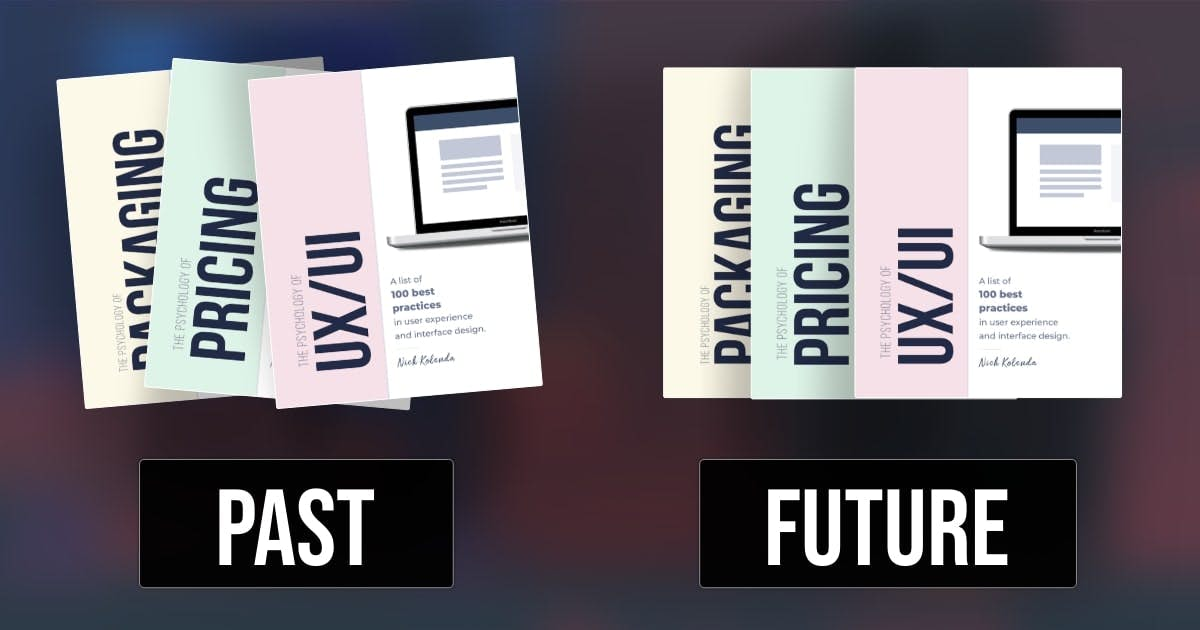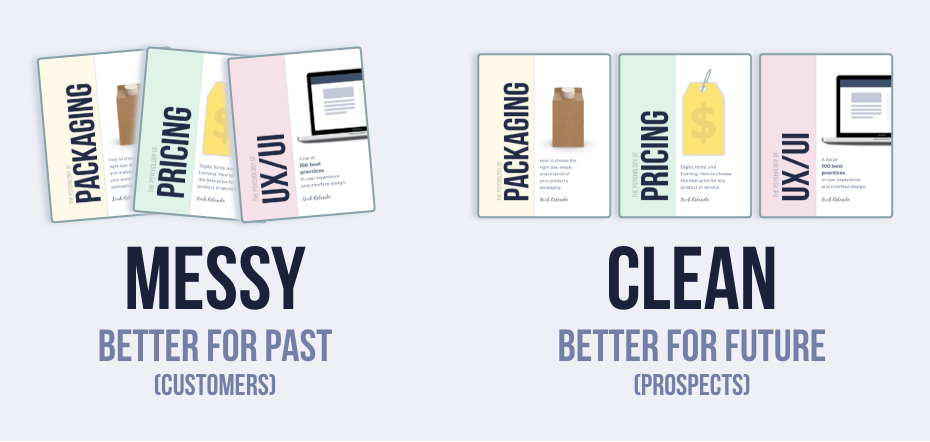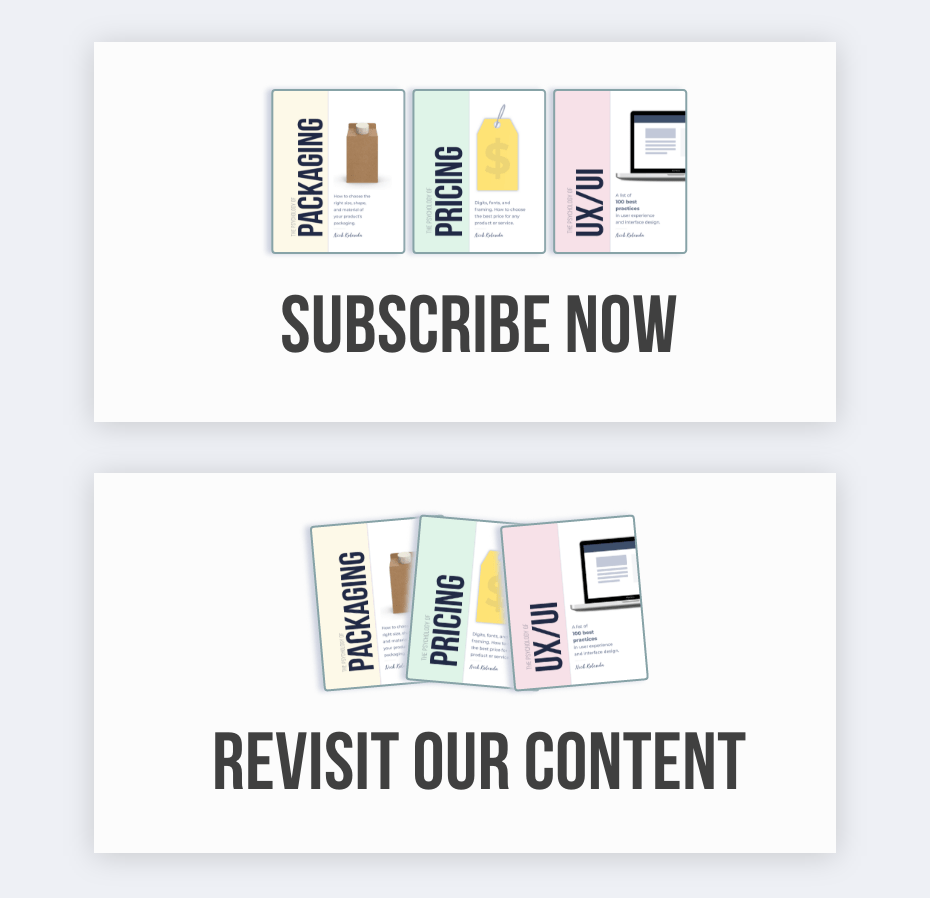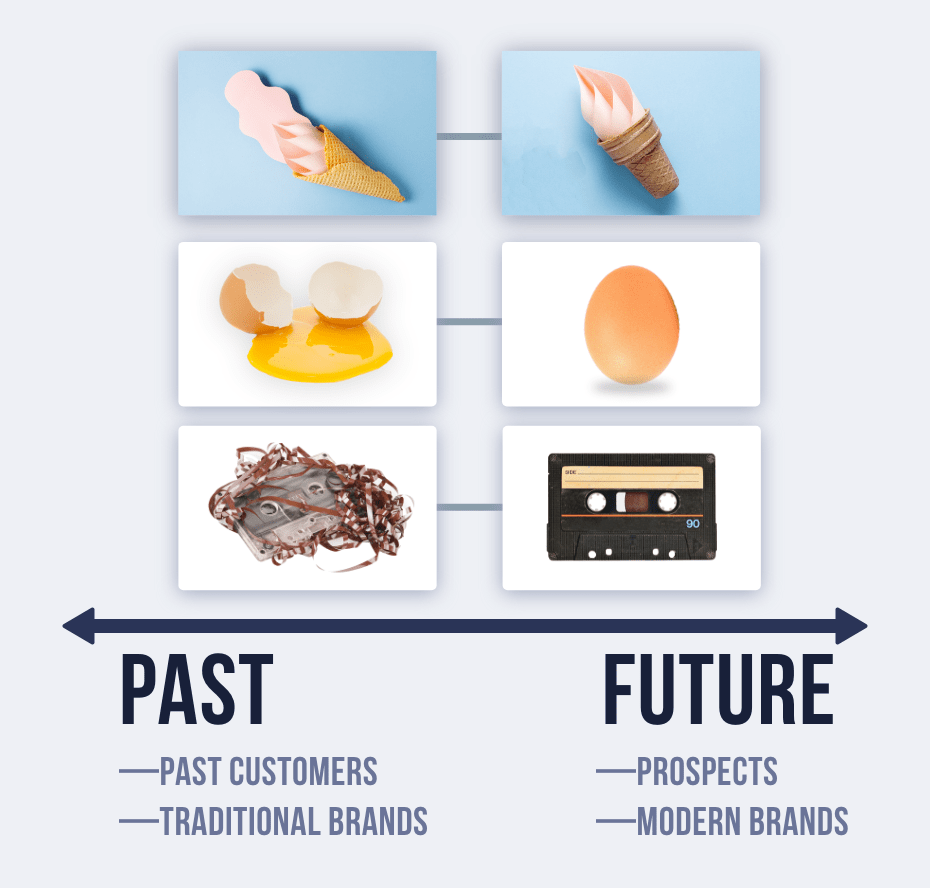Show Disorganized Assortments From the Past
Disheveled assortments perform better for past viewers because this content feels "touched."

Overview
Disheveled assortments perform better for people who have already viewed content, while clean assortments perform better for new people.

Why does that happen?
In physics, "entropy" is the amount of disorder.
Over time, entropy only increases. Stephen Hawking said:
You may see a cup of tea fall off a table and break into pieces on the floor ... but you will never see the cup gather itself back together and jump back on the table (A Brief History of Time).
This law of entropy has been drilled into your brain: You prefer advertisements that depict the future in a pristine and untouched condition because your brain is conceptualizing the future in this style (Biliciler, Raghunathan, & Ward, 2022).
Suppose that you're sending a confirmation email to new subscribers. These subscribers haven’t “touched” your content yet. Subconsciously, they are conceptualizing your content in a pristine condition.
Once they digest your content, however, entropy will exist. Additional exposures (e.g., remarketing ads) should perform better with an imperfect style because their brain is conceptualizing this content with entropy.

Same with branding.
An ad for modern kitchen tools performed better with a fully intact egg, whereas an ad for traditional cooking tools performed better with a broken egg:

- Biliciler, G., Raghunathan, R., & Ward, A. F. (2022). Consumers as naive physicists: how visual entropy cues shift temporal focus and influence product evaluations. Journal of Consumer Research, 48(6), 1010-1031.
